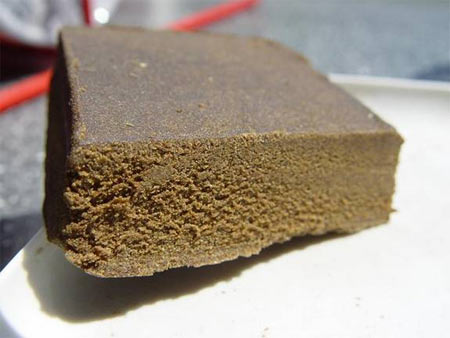
by Greg Green
Proper screening methods
Now that you have an idea of what screening is about we can look at it in better detail. This explanation will apply to all of the above screening methods. We stated that a metal screen is used first followed by a silk screen. Nowadays steel fabrics can be bought in sizes that have much smaller pours than even the finest silk screen. You should typically look for a metal screen that is ranged somewhere between 100 lines per inch to 140 per inch. A common screen used by most home hash makers is a screen with 120 lines. A wooden frame is constructed to hold the screen in place on one side. You can glue the screen on or nail it into place.
Take 4 small wooden blocks and place them over a sheet of glass or a mirror. Place the screen over the blocks. Have a gap of an inch or so between the mirror and the screen. Place small amounts of skuff on the screen and gently role it back and forth across the screen using a credit card or similar plastic object. Do this very gently, over and back and over and back and over and back. You may have to push the skuff over and back a hundred times before you can see the tiny resin glands gather on the mirror below. All this is done with very little pressure.
Once you have collected as much resin glands as possible use the card to sweep them off the mirror and onto another surface. Now take the ‘used’ skuff and this time apply a bit more pressure to it as you roll it back and forth across the screen. With this little bit of extra force applied you will be able to knock through any resin glands that did not fall through the first time, but you will also push through some veg material such as branch shavings and leaf particles. This second round of pressing will result in a lower quality grade of skuff.

You see skuff is skuff. From when you cure your trim to the point where you sieve it through, it is still skuff. Your objective is to try and collect as much resin from the skuff as possible. You will not end up with hash, but you will end up with different grades of skuff that can be used to make hash later.
You can smoke the different grades of skuff there and then, but you may notice that it is hard to do so. Since this powder is so fine it will typically fall from a joint easily or pass through the pours of a pipe screen. In order to solve this problem we must compress the skuff into hashish. This we will discuss later after we talk about other extraction techniques.
Drum Machines
A drum machine is an automatic screening device. You will probably have to build one yourself but this is easy enough to do with the right materials. The size of the unit depends on how much cannabis you wish to sieve at a time. Most drum machines have a 1.5 – 2ft diameter.
Water Extraction
Resin glands can be removed from the cannabis plant by agitating the trim in cold water, typically ice cold water or water that has been chilled in a fridge overnight. The trim is placed in a bucket and the cold water is poured in on top. The whole lot is swirled or mixed around using a blender. After mixing you let it sit for a few minutes before scooping out the skuff that is floating on the surface. The remaining liquid is strained through a sieve. By sieving this liquid through a coffee sieve you will be able to collect most of the trichomes, as they will not pass through with the water. Just let the coffee sieve dry and hey presto!, you got excellent grade skuff to make hash from.
The basic idea behind this is that cold water breaks the glands away from the leaf matter. The glands will eventually sink to the bottom of the bucket because they are heavier than water. The bulk leaf matter should stay afloat which can be easily scooped away.

